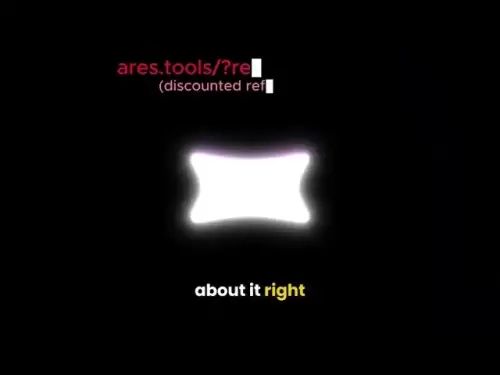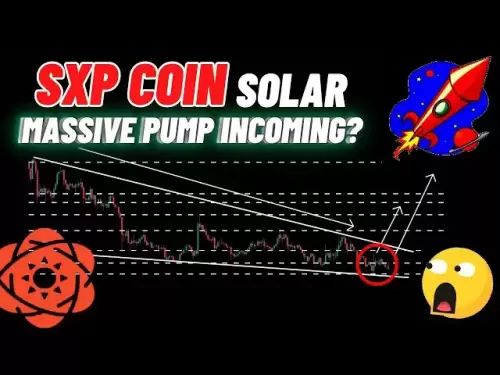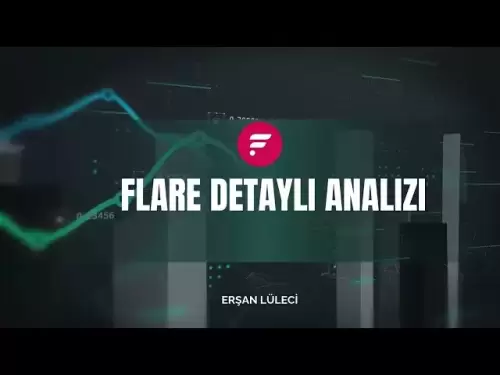-
 Bitcoin
Bitcoin $117500
2.04% -
 Ethereum
Ethereum $3759
3.02% -
 XRP
XRP $3.171
3.30% -
 Tether USDt
Tether USDt $1.000
0.03% -
 BNB
BNB $782.4
2.52% -
 Solana
Solana $187.2
5.62% -
 USDC
USDC $0.0000
0.02% -
 Dogecoin
Dogecoin $0.2380
5.26% -
 TRON
TRON $0.3175
1.07% -
 Cardano
Cardano $0.8227
4.03% -
 Hyperliquid
Hyperliquid $44.50
5.44% -
 Sui
Sui $4.020
10.07% -
 Stellar
Stellar $0.4396
6.28% -
 Chainlink
Chainlink $18.32
4.55% -
 Hedera
Hedera $0.2628
10.71% -
 Bitcoin Cash
Bitcoin Cash $554.8
4.90% -
 Avalanche
Avalanche $24.20
4.60% -
 Litecoin
Litecoin $113.7
2.31% -
 Shiba Inu
Shiba Inu $0.00001413
5.99% -
 UNUS SED LEO
UNUS SED LEO $8.984
0.11% -
 Toncoin
Toncoin $3.326
7.22% -
 Ethena USDe
Ethena USDe $1.001
0.00% -
 Uniswap
Uniswap $10.49
4.56% -
 Polkadot
Polkadot $4.092
4.02% -
 Monero
Monero $326.6
1.30% -
 Dai
Dai $1.000
-0.01% -
 Bitget Token
Bitget Token $4.570
2.49% -
 Pepe
Pepe $0.00001267
5.10% -
 Aave
Aave $297.3
3.10% -
 Cronos
Cronos $0.1344
4.10%
Is scalping allowed on Gate.io futures?
Gate.io allows scalping on futures with no trade frequency limits, making it ideal for high-frequency traders using bots or manual strategies—just avoid market manipulation and manage leverage carefully.
Jul 26, 2025 at 04:57 am
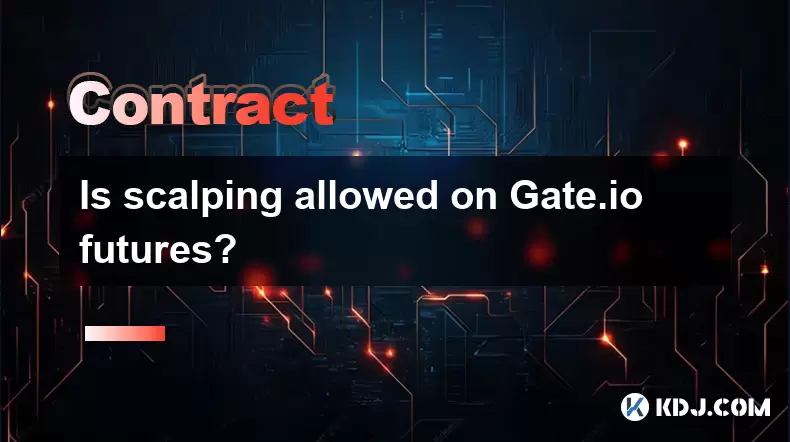
Understanding Scalping in the Context of Gate.io Futures
Scalping is a high-frequency trading strategy where traders open and close positions rapidly—sometimes within seconds—to capture small price movements. On Gate.io futures, this practice is explicitly permitted as long as it complies with the platform’s terms of service and risk management rules. Unlike some exchanges that restrict or discourage scalping due to infrastructure strain or perceived market manipulation, Gate.io does not impose limits on trade frequency or minimum holding time for futures contracts. This makes it a viable environment for scalpers who rely on speed and precision.
Gate.io Futures Trading Rules Relevant to Scalpers
Gate.io’s futures contracts operate under standardized margin and leverage rules, which directly impact scalping viability. Traders must maintain sufficient margin to avoid liquidation—a critical concern for scalpers executing multiple leveraged positions. The platform supports up to 100x leverage on certain pairs, but using such high leverage without proper risk controls can lead to rapid losses during volatile scalping sessions. Importantly, Gate.io does not penalize rapid order placement or cancellation, which is essential for scalpers using automated bots or manual high-speed strategies. However, any form of market manipulation, such as spoofing or layering, remains strictly prohibited under Gate.io’s Anti-Manipulation Policy.
How to Set Up a Scalping Strategy on Gate.io Futures
To begin scalping on Gate.io futures, follow these steps:
- Log into your Gate.io account and navigate to the Futures tab.
- Select the desired trading pair (e.g., BTC/USDT).
- Choose between isolated or cross margin mode—isolated margin is often preferred for scalping to limit risk per trade.
- Set leverage using the slider; start with 5x–20x to reduce liquidation risk while maintaining responsiveness.
- Open the order panel and switch to limit or post-only orders to avoid paying taker fees, which accumulate quickly during scalping.
- Use the built-in charting tools or connect a third-party trading view to set tight stop-loss and take-profit levels (e.g., 0.1%–0.5% profit targets).
This setup ensures minimal slippage, controlled risk, and fee efficiency—key pillars of successful futures scalping.
Fees and Their Impact on Scalping Profitability
Gate.io applies a taker fee of 0.04% and a maker fee of -0.01% (rebate) for futures trading. For scalpers, who may execute dozens or hundreds of trades daily, these fees directly affect net profitability. To optimize: - Always place maker orders (limit orders that rest on the book) to earn the 0.01% rebate per trade.
- Avoid market orders or aggressive limit fills that trigger taker fees.
- Monitor your fee tier in the account dashboard; higher 30-day trading volume reduces fees incrementally.
- Calculate break-even points before entering trades—e.g., a 0.1% price move must exceed 0.05% in total fees (0.04% taker + 0.01% spread) to be profitable if using taker orders.
These adjustments are non-negotiable for scalpers aiming to maintain consistent returns.
Technical Tools and Bots for Scalping on Gate.io
Gate.io offers API access with WebSocket support, enabling integration with third-party scalping bots like 3Commas, HaasOnline, or custom Python scripts. Key features include: - Real-time order book streaming for detecting micro-price shifts.
- Support for time-weighted average price (TWAP) and volume-weighted average price (VWAP) order types via API.
- Webhook alerts for liquidation thresholds or profit targets.
- Rate limits: Gate.io allows up to 1200 requests per minute per IP, sufficient for most scalping bots but requiring careful management to avoid throttling.
To configure an API key for scalping:
- Go to Account > API Management.
- Enable "Spot & Margin Trading" and "Futures Trading" permissions.
- Restrict the IP whitelist to your bot’s server IP.
- Never enable withdrawal permissions for scalping keys.
Misconfigured API keys can expose your account to unauthorized access—a critical vulnerability when automating high-frequency trades.
Monitoring Risk and Avoiding Liquidation During Scalping
Scalping on futures introduces amplified risk due to leverage. Gate.io’s liquidation engine triggers when your position’s margin ratio falls below the maintenance threshold (varies by leverage). To mitigate: - Use real-time margin ratio alerts in the futures interface to track proximity to liquidation.
- Set automatic stop-loss orders at 1–2% below entry for each trade—not just per session.
- Diversify across multiple low-correlation pairs (e.g., BTC, ETH, SOL) to avoid systemic risk.
- Never scalping during major news events (e.g., CPI data, Fed announcements) where volatility spikes can trigger cascading liquidations.
These practices ensure your scalping strategy remains resilient even during unexpected market moves.
Frequently Asked Questions
Can I use a trading bot for scalping on Gate.io futures without violating terms?
Yes, Gate.io explicitly allows algorithmic trading via API as long as it does not disrupt platform stability or engage in manipulative behavior. Ensure your bot respects rate limits and avoids spamming the order book.Does Gate.io flag or ban accounts for excessive scalping activity?
No, Gate.io does not monitor or penalize users based on trade frequency alone. Account restrictions only occur if behavior violates the Anti-Manipulation Policy or triggers risk controls like repeated liquidations.What happens if my scalping bot causes a series of rapid losses?
Gate.io will automatically liquidate positions when margin falls below maintenance levels. No additional penalties apply beyond the loss of position value. You remain responsible for any negative balance in extreme cases.Is there a minimum trade size for futures scalping on Gate.io?
Yes, each futures contract has a minimum order size—e.g., 0.001 BTC for BTC/USDT. Ensure your scalping strategy respects these thresholds to avoid rejected orders.
Disclaimer:info@kdj.com
The information provided is not trading advice. kdj.com does not assume any responsibility for any investments made based on the information provided in this article. Cryptocurrencies are highly volatile and it is highly recommended that you invest with caution after thorough research!
If you believe that the content used on this website infringes your copyright, please contact us immediately (info@kdj.com) and we will delete it promptly.
- Pi Coin, Wallet Features, and Coinbase: What's the Buzz?
- 2025-07-26 18:30:12
- Worldcoin, Punisher Coin, and the Meme Coin Mania: What's the Haps?
- 2025-07-26 18:30:12
- Conviction, Justice System, and Murders: A Look at Recent Cases and Shifting Perspectives
- 2025-07-26 18:50:11
- Shiba Inu, Remittix, and the Market Surge: What's the Hype?
- 2025-07-26 19:10:12
- Cardano Price, ADA Holders, and Leadership Criticism: What's the Real Deal?
- 2025-07-26 19:30:12
- MicroStrategy, Bitcoin, and XRP Whale Dumps: What's the Deal?
- 2025-07-26 19:30:12
Related knowledge

Why is my Bitstamp futures position being liquidated?
Jul 23,2025 at 11:08am
Understanding Futures Liquidation on BitstampFutures trading on Bitstamp involves borrowing funds to open leveraged positions, which amplifies both po...

Does Bitstamp offer inverse contracts?
Jul 23,2025 at 01:28pm
Understanding Inverse Contracts in Cryptocurrency TradingIn the realm of cryptocurrency derivatives, inverse contracts are a specific type of futures ...

How to find your Bitstamp futures trade history?
Jul 23,2025 at 08:07am
Understanding Bitstamp and Futures Trading AvailabilityAs of the current state of Bitstamp’s service offerings, it is critical to clarify that Bitstam...

Can I use a trailing stop on Bitstamp futures?
Jul 23,2025 at 01:42pm
Understanding Trailing Stops in Cryptocurrency TradingA trailing stop is a dynamic type of stop-loss order that adjusts automatically as the price of ...

Can I use a trailing stop on Bitstamp futures?
Jul 25,2025 at 02:28am
Understanding Trailing Stops in Cryptocurrency Futures TradingA trailing stop is a dynamic type of stop-loss order that adjusts automatically as the m...
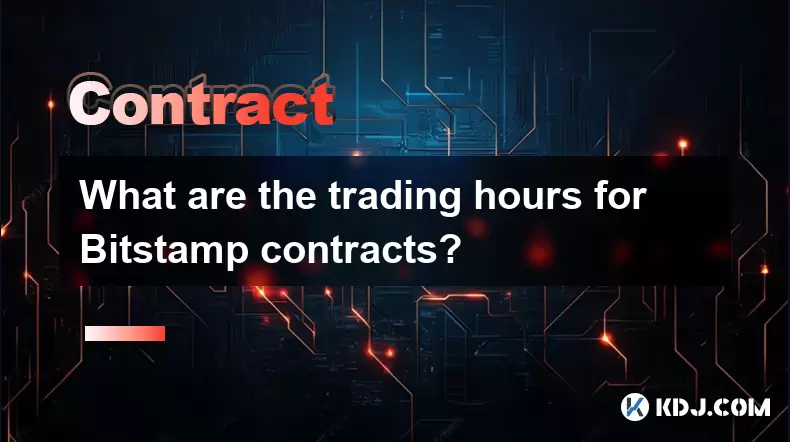
What are the trading hours for Bitstamp contracts?
Jul 24,2025 at 11:56am
Understanding Bitstamp and Contract Trading AvailabilityBitstamp is one of the longest-standing cryptocurrency exchanges, established in 2011 and head...

Why is my Bitstamp futures position being liquidated?
Jul 23,2025 at 11:08am
Understanding Futures Liquidation on BitstampFutures trading on Bitstamp involves borrowing funds to open leveraged positions, which amplifies both po...

Does Bitstamp offer inverse contracts?
Jul 23,2025 at 01:28pm
Understanding Inverse Contracts in Cryptocurrency TradingIn the realm of cryptocurrency derivatives, inverse contracts are a specific type of futures ...

How to find your Bitstamp futures trade history?
Jul 23,2025 at 08:07am
Understanding Bitstamp and Futures Trading AvailabilityAs of the current state of Bitstamp’s service offerings, it is critical to clarify that Bitstam...

Can I use a trailing stop on Bitstamp futures?
Jul 23,2025 at 01:42pm
Understanding Trailing Stops in Cryptocurrency TradingA trailing stop is a dynamic type of stop-loss order that adjusts automatically as the price of ...

Can I use a trailing stop on Bitstamp futures?
Jul 25,2025 at 02:28am
Understanding Trailing Stops in Cryptocurrency Futures TradingA trailing stop is a dynamic type of stop-loss order that adjusts automatically as the m...

What are the trading hours for Bitstamp contracts?
Jul 24,2025 at 11:56am
Understanding Bitstamp and Contract Trading AvailabilityBitstamp is one of the longest-standing cryptocurrency exchanges, established in 2011 and head...
See all articles





















